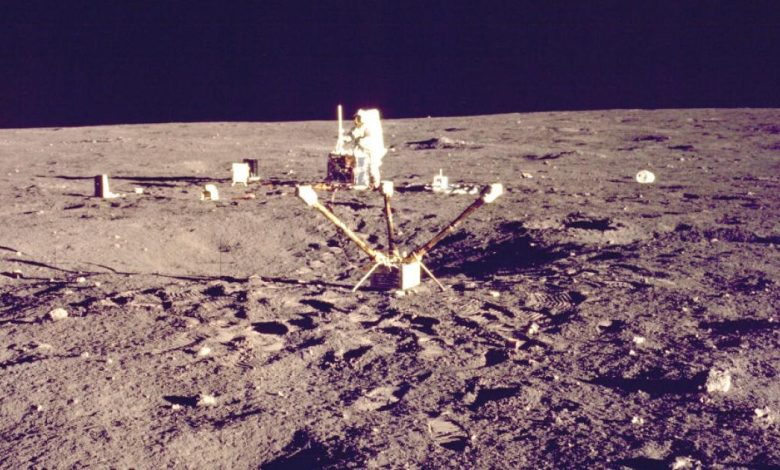Moon soil is a fuel for rockets… A new discovery may launch the “space age”

A new study has found that lunar soil may be converted into rocket fuel to power future missions to Mars.
An analysis of the coarse dust grains returned by the Chinese spacecraft “Chang’e 5” found that the moon’s soil contains compounds that convert carbon dioxide into oxygen, according to research published in the newspaper “Joule”.
That soil is rich in iron and titanium, which act as catalysts under sunlight and can convert carbon dioxide and water released by astronauts’ bodies into oxygen, hydrogen and other useful by-products like methane to power a lunar base.
low cost
Because rocket fuel is made from liquefied oxygen and hydrogen, this allows for the creation of an interplanetary fuel station to cut costs on the Moon for trips to the Red Planet and beyond.
This step is vital for space agencies around the world because securing fuel is extremely costly on launch missions to orbit.
Passing through Earth’s atmosphere and pulling off gravity means tons of fuel are needed per second to take off, so securing fuel from outside the Earth’s surface can save a lot of money.
How do we get fuel?
“We use on-site environmental resources to reduce missile payload. Our strategy provides an affordable and sustainable off-shore living environment scenario,” said lead author of the study Professor Yingfang Yao from Nanjing University in China.
The researchers propose a technique called “extra-Earth photosynthesis”, which makes use of lunar soil and solar radiation, the two most abundant resources on the moon.
This putative system converts water extracted from the moon and the exhaust of astronauts’ breathing into oxygen and hydrogen using the energy of sunlight.
The carbon dioxide emitted by the lunar inhabitants is also collected and combined with hydrogen from the water and stimulated by the lunar soil.
This process produces hydrocarbons such as methane, which can be used as fuel, while sunlight produces water, oxygen and fuel that can support life on the moon’s base.

lunar village
The research offers the hope of creating a “lunar village” that includes a launching pad and mining operations.
Scientists say the moon is a treasure trove of valuable resources, with gold, platinum and other rare metals for the next generation of electronics waiting to be extracted.
Future Chinese manned lunar missions are set to test a renewable energy method known as electrolysis.
“Different methods are being tried to improve the design, such as dissolving the soil into a nanostructured material,” Yao said.
Previous ideas required energy sources from Earth, where NASA’s Mars probe has a device that makes oxygen from carbon dioxide, but is powered by a nuclear battery on board.
space age
“In the near future, we will see the manned spaceflight industry develop as rapidly as the sail age in the 17th century when hundreds of ships went to sea, we will enter the space age,” Yao added.
“But if we want to conduct large-scale exploration of the extraterrestrial world, we will need to think of ways to reduce the payload, which means relying on as little supplies from Earth as possible and using extraterrestrial resources instead.”
NASA’s ambitious Artemis project plans to establish a lunar base by 2028, along with a lunar space station called Gateway to facilitate trips to Mars.
China hopes to win the race to Mars by landing the first humans on it within the next 10 years.
And last March, the US space agency “NASA” opened one of the samples containing soil and rocks from the moon sealed with a vacuum for the first time in nearly 50 years.
In December 1972, NASA astronauts Eugene Cernan and Harrison Schmidt drilled into the lunar surface to collect samples of lunar soil for transport back to Earth.
“We have had the opportunity to open this incredibly precious specimen that has been preserved for 50 years in a vacuum,” Thomas Zurbuchen, associate administrator for NASA’s Science Mission Directorate, said in a statement. “Finally we will see what treasures are within us,” he added.
https://time.news/moon-soil-is-a-fuel-for-rockets-a-new-discovery-may-launch-the-space-age/

